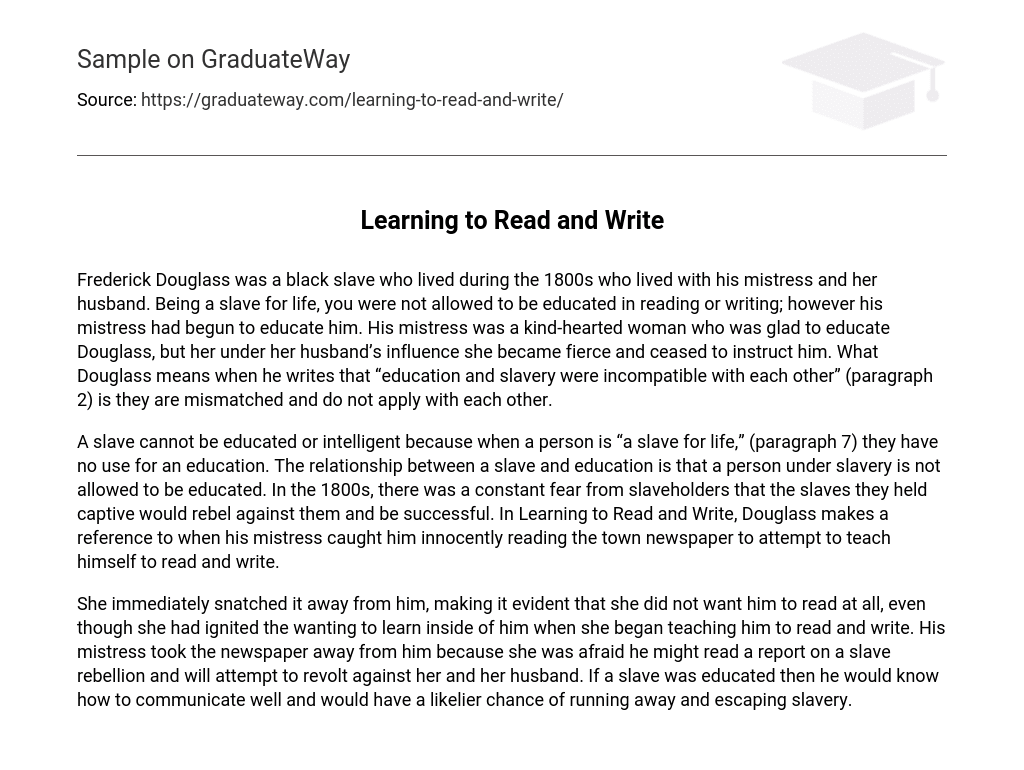Frederick Douglass was a black slave who lived during the 1800s who lived with his mistress and her husband. Being a slave for life, you were not allowed to be educated in reading or writing; however his mistress had begun to educate him. His mistress was a kind-hearted woman who was glad to educate Douglass, but her under her husband’s influence she became fierce and ceased to instruct him. What Douglass means when he writes that “education and slavery were incompatible with each other” (paragraph 2) is they are mismatched and do not apply with each other.
A slave cannot be educated or intelligent because when a person is “a slave for life,” (paragraph 7) they have no use for an education. The relationship between a slave and education is that a person under slavery is not allowed to be educated. In the 1800s, there was a constant fear from slaveholders that the slaves they held captive would rebel against them and be successful. In Learning to Read and Write, Douglass makes a reference to when his mistress caught him innocently reading the town newspaper to attempt to teach himself to read and write.
She immediately snatched it away from him, making it evident that she did not want him to read at all, even though she had ignited the wanting to learn inside of him when she began teaching him to read and write. His mistress took the newspaper away from him because she was afraid he might read a report on a slave rebellion and will attempt to revolt against her and her husband. If a slave was educated then he would know how to communicate well and would have a likelier chance of running away and escaping slavery.





